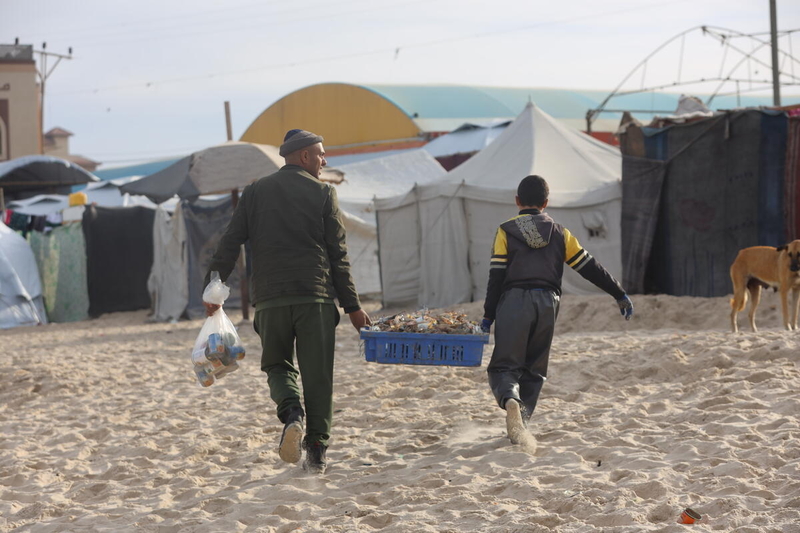
Damaged fishing boats lay on the ground, in Khan Younis, Gaza Strip, 09 December 2024. ©FAO/Yousef Alrozzi
Gaza: Reviving Gaza’s fishing sector hinges on restoring peace and safe access to the sea. Once these conditions are met, the Food and Agriculture Organization of the United Nations (FAO) said today it can assist with projects to repair boats and equipment and to inject emergency funds.
Gaza’s coastal ports were once thriving hubs, with fishers forming the backbone of the community for generations. The conflict has brought its once thriving fishing sector to the brink of collapse, but the situation could still be reversed if fishers are granted safe access to fishing waters and imports of essential fish production inputs and tools are resumed FAO said.

The impact of the ongoing escalation on the fishing sector is devastating. Gaza’s average daily catch between October 2023 to April 2024 dropped to just 7.3 per cent of 2022 levels, causing a $17.5 million production loss. The destruction of Gaza’s two main aquaculture farms, along with the hatchery facility, has also left the sector unable to produce alternative aquatic foods through aquaculture.
According to one assessment, before the conflict over 6,000 individuals in Gaza, including 4,200 registered fishers and boat owners, relied on fishing as their main income. The sector supported around 110,000 people.
Even before the recent military escalation, fishers in Gaza were restricted to operating within limited fishing zones: six nautical miles in the north and 15 in the south. Today, those fishing just metres from the shore are reportedly being targeted, risking their lives. North of Wadi Gaza, which separates the northern and southern parts of the Strip, the Port of Gaza City has been severely damaged, with most fishing boats destroyed.
Impact on food security and livelihoods

The damage to Gaza’s fishing sector has exacerbated an already dire food security crisis. Fish, once a vital source of protein and other essential nutrients for Gazans, is now nearly unavailable.
“In Gaza’s fishing areas now lie broken boats, torn nets, and ruined infrastructure, standing in stark contrast to the once-vibrant industry that supported thousands of fishers for generations,” said FAO Deputy Director-General, Beth Bechdol.
“For Gazans, the sea was not just a source of food, but a source of livelihood and identity. FAO can assist to help rebuild Gaza’s fishing industry, but for this to happen peace must first be established and fishers must be allowed to operate their boats and cast their nets without fear of harm,” she added.
Ciro Fiorillo, Head of the FAO Office for the West Bank and Gaza Strip, stated, “FAO is ready to restart projects, replenish damaged boats and equipment, and inject emergency funds as soon as these key fishing inputs for production are allowed to enter the Strip, a sustained ceasefire is in place, and access to the sea is restored. This will help Gazan fishers resume their activities, revitalize livelihoods, contribute to economic recovery, and restore dignity to the people of Gaza.”
Before the escalation of hostilities, FAO supported over 4,000 Gazan fishers, improving food security, safety, and sustainability. Key initiatives like the marine cage project and enhanced fish stock monitoring helped to establish inland fish farms, enhanced fishers’ skills, shared best practices, and supplied essential cold chain resources, including solar panels, ensuring a more resilient food source for Gaza.
– global bihari bureau





